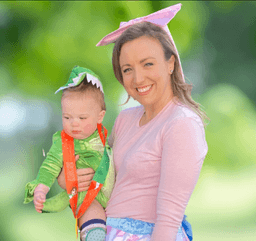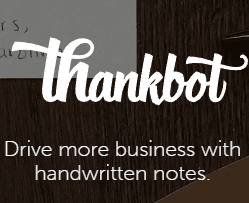From One Skirt to a $120K Exit: Dottie for Running’s 10-Year E-Commerce Journey

Business Description
Table of Contents
Navigate through the case study sections
Executive Summary
Case Study Content
Starting with a Single Skirt: The Unlikely E-Commerce Launch
Samantha Hamilton never set out to build a large business. In 2015, tucked away in a tiny Los Angeles apartment, her focus was simply to get her feet wet in the world of entrepreneurship. Armed with a background in fashion, Samantha sketched and sewed a whimsical, costume-inspired running skirt, complete with her soon-to-be-signature “Butt Bow.” This wasn’t some grand market study, it was an experiment. With help from her mom for the first prototype, she wore the skirt to a runDisney event, handed out a few business cards, then watched the orders come in. The response was immediate. Runners wanted something unique and fun for race day, and the soon-to-be-named Dottie for Running fit the bill.
Growth Fueled by Community, Not Big Budgets
As Samantha continued to sew while juggling her day job, Dottie for Running quickly outgrew hobby status. But instead of investing thousands in paid ads, she leaned into the community. Early customers posted photos on Instagram and Facebook, tagging the business and sharing their custom looks to the runDisney crowd. Orders skyrocketed after events, especially as word-of-mouth began circulating in closed running groups and team chats. Community-driven features like themed meetups and the “Team Butt Bow” made the brand more than just a shop, it became a badge of identity for the niche. There wasn’t a marketing department; just Samantha and her loyal early adopters, slowly building something real.
Adapting to Life: Scaling an E-Commerce Brand Through Personal Change
In the ten years that followed, life for Samantha changed drastically. She got married, became a military spouse, lived abroad, and had three children. Moving between countries and juggling motherhood with business operations meant late nights, timezone headaches, and more coffee than she would admit. Yet, Dottie for Running didn’t slow. Manufacturing shifted from her living room to a national network of seamstresses. At times, international shipping and event appearances had to be scaled back, but Samantha always kept the community informed. When COVID-19 hit and runDisney races paused, she downsized. But the moment races returned, the brand saw a 300% year-over-year sales jump, proving that customer loyalty ran deep.
The Breaking Point and Tough Decisions
By year ten, it was clear: demand outpaced what a part-time founder could provide. Samantha was still in control, but with three kids and frequent moves, she couldn’t attend in-person events or handle international shipments like before. She scaled back out of necessity, prioritizing family over expansion. The business stayed profitable, but she was reaching burnout. It wasn’t about growth for growth’s sake, she wanted the community and brand to thrive, but recognized her limits. The answer became clear: it was time to sell. But she wasn’t willing to just hand it over to a faceless investor. The business meant too much for that.
Finding the Right Exit: Personal, Not Just Profitable
After advice from friends, Samantha listed Dottie for Running on Flippa and was paired with broker Maliha Hasan. Instead of chasing volume or the highest bidder, she and Maliha focused on finding a buyer who understood the brand’s story and the running community’s quirks. “You don’t need hundreds of buyers, you just need the right one, ” Maliha advised. That was the approach, and it paid off. After fielding offers, the ideal buyer emerged, a customer and passionate runDisney runner who had lived the Dottie for Running experience already. The transition was hands-on: the new owner traveled to meet Samantha, picked up inventory in person, and spent hours going through operations. A 90-day transition, detailed training manual, and slow handoff kept fears at bay and ensured the culture would survive the sale.
Post-Sale: Growth Continues, Legacy Intact
The deal closed at $120,000, validating the strength of a community-rooted e-commerce brand, even one started for less than $5,000. The new owner quickly set to work: exploring small-batch production for higher volume runs, planning in-person pop-ups, and expanding the in-stock program (something Samantha never had the margin to tackle). Customer feedback stayed positive. The business kept its “handmade feel, ” but scaled smarter. Transitioning out, Samantha focused on her family but stayed available for questions. The brand she grew from scratch was in good hands and ready for a new chapter.
Key Lessons for Small Business Owners and Side Hustlers
- If you only have a little to start, don’t let that stop you, Samantha launched with under $5,000 and one skirt design.
- Clear communication, organic community-building, and honesty can carry you further than paid ads and celebrity endorsements.
- Know when to let go. Scaling back can preserve quality and sanity, but recognize when your business needs someone with more time or a new skill set.
- The right exit isn’t just the most profitable. It should also protect your brand’s reputation and the relationships you’ve built with customers.
- Plan your handoff. Training, documentation, and in-person time make for smoother transitions.
- Personal touch matters, even during an acquisition. Don’t treat loyal customers as mere numbers, they’re your real value.
Tools That Made It Possible
- Shopify for storefront and order management
- Instagram and Facebook for organic marketing, community engagement, and UGC
- PayPal and Stripe for payment processing
- Google Workspace for email and documentation
- Flippa as a marketplace and broker support for the exit
Final Thoughts
Dottie for Running’s journey shows that you don’t need a massive budget, Silicon Valley connections, or global supply chains to build a loved and profitable brand. Focused niche, authentic story, and treating every customer as a VIP can turn a side hustle into a legacy and a rewarding exit. Just start, adjust as you grow, and don’t be afraid of a new chapter when your time comes.
Key Takeaways
- 1Launching with minimal capital is possible; Samantha started Dottie for Running with less than $5,000 and one handmade prototype.
- 2Community-driven growth outperformed paid marketing, proving word-of-mouth and authentic engagement can foster customer loyalty.
- 3Scaling while balancing major life changes requires adaptability; Samantha managed growth through international moves and parenthood.
- 4A thoughtful exit strategy focused on finding a buyer passionate about the brand ensured a smooth, legacy-preserving transition.
- 5Detailed transition planning including manuals and face-to-face time enabled a successful handover to the new owner.
- 6Organic marketing through social media and authentic storytelling built a cult following and sustained the business through challenges.
Key Facts
Tools & Technologies Used
Premium Content Locked
Subscribe to access the tools and technologies used in this case study.
Unlock NowHow to Replicate This Success
Premium Content Locked
Subscribe to access the step-by-step replication guide for this case study.
Unlock NowInterested in Being Featured?
Share your success story with our community of entrepreneurs.
Explore More Case Studies
Discover other inspiring business success stories

How Thankbot Sold Fast: The Handwritten Notes Startup That Cashed In on Personal Touch
Thankbot launched a handwritten note service, outpacing digital-only competitors by offering businesses and individuals ...
Thankbot

How an Affiliate Marketer Scored $496K in One Month with Blank Credit Card Sweepstakes
This case study breaks down how a Facebook ad campaign for blank credit card sweepstakes generated $743,184 in revenue a...
Affiliates Inner Circle

How Oleg Malkov Made $480K Selling Website Templates
Oleg Malkov’s journey from SEO freelancer to successful ThemeForest template seller highlights perseverance, strategic p...
MonsterPBN
